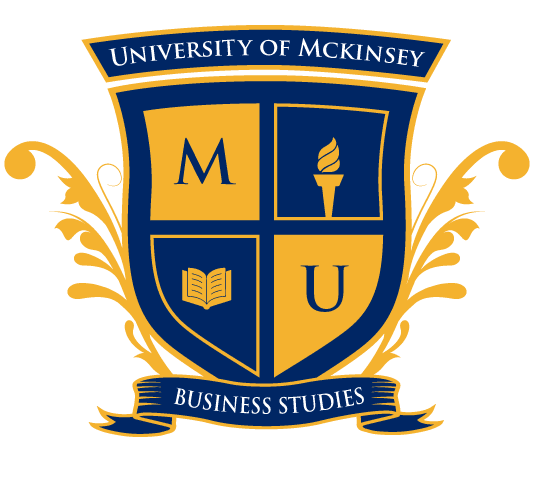What was the impact of Elton Mayo on management theory?
How did the human relations movement influence current management theory?
The human relations approach appeared as a way to respond to some of the issues raised by scientific management and the worker’s under-socialized point of view, which ignored social elements of the job.
Elton Mayo discovered that many employees are not performing well despite their good earning.
He studied their situation and discovered that these employees are not recognized or appreciated enough or are not involved enough or integrated with the other member of the team.
So any manager should try to motivate any employee by listening to his suggestions and by noticing progress.
The ideas of efficiency produced through operations and maintenance, legal, or administrative improvements were the key connective characteristics of Taylor, Weber, and Fayol.
One of the main assumptions was a focus on logic and reason. There was a logic to actions, according to scientific management, and formal and knowledge authority were the primary motivators in the workplace. Scientific management has a tendency to minimize the impact of social pressures on human interactions.
The human relations movement advanced scientific management by recognising that people’s attitudes, perceptions, and desires influence their workplace performance. Managers, for example, began to recognise that resolving disputes was more difficult than the scientific management approach described.
The primary distinction between scientific management and human relations theory was that human relations theory acknowledged social factors as a source of power in the workplace. While Taylor acknowledged the existence of social pressures in an organization, he sought to alleviate them through pay, that is, compensating workers for production even when social pressure forced workers to reduce output. Fayol recognised the existence of social issues as well, but he emphasized organizational commitment as a management technique rather than individual commitment.
Fayol recognised the existence of social issues as well, but he emphasized organizational commitment as a management technique rather than worker commitment to each other or to their supervisor. Weber believed that laws and regulations would guide society and corporations and emphasized the rule of law. However, he did not devote enough energy to recognising the outcomes that occur when rules are broken. Fayol and Weber failed to recognise the importance of corporate culture in organizations and failed to investigate why employees do not follow orders. The human relations movement emphasized the social aspect of work in the study and theory of work.
No research studies have been more misunderstood than the Hawthorne studies. The Hawthorne studies are the most influential, misunderstood, and criticized research experiment in history. According to legend, Elton Mayo (1880-1949) researched, theorized, and developed human relations theory based on a 1924-1932 experiment he conducted at the Western Electric Company’s Hawthorne plant in Cicero, Illinois. However, only a small portion of the legend is true. The truth is more complex and difficult to grasp. Most textbooks state that Mayo conducted the research and studies. However, this is fiction. Scholars from the Massachusetts Institute of Technology initiated the research. Mayo was not involved until 1927. Nonetheless, it is Mayo’s interpretation of Hawthorne that has received the most attention.
Mayo’s interpretation of Hawthorne has come to dominate the literature.
The illumination study was the first phase of the Hawthorne studies, and it sought to quantify the impact of light on productivity. Because there were too many variables other than light that could have affected worker productivity, the study was inconclusive. The researchers couldn’t figure out why productivity had increased. The relay-assembly-test-room was the second phase of the study, and these experiments were carried out in a room where researchers tested the effect that working conditions such as breaks, workday length, company-provided lunches, and payment method had on productivity.
The researchers discovered that regardless of which variable was manipulated, production increased. Nonetheless, soldiering took place during the experiment. Production increased even more after two workers were fired due to health issues and marriage. The researchers were surprised by the results: they expected a decrease but instead saw a consistent increase.
Human Relations Theory Elements
These six fundamental propositions are at the heart of human relations theory:
_A focus on people as opposed to machines or economics
_The organizational environment is not a structured social setting.
_Human relationships play an important role in motivating people.
_Motivation is dependent on teamwork, which necessitates coordination and cooperation from all parties involved.
_Human relationships within teams must achieve both individual and organizational goals at the same time.
_Individuals and organizations seek efficiency in order to achieve maximum results with minimal inputs.
The concept of individual motivation is also central to understanding Human Relations theory. The disadvantage of this theory is that it requires a number of assumptions about human behavior to be accepted.
Practical managerial tips :
-Appreciate your team’s effort on daily basis.
-Train them and prepare them well before delegating any task to them.
-Be sure that the workplace atmosphere is healthy by letting all employees engage and have quality time every couple of weeks by celebrating a good achievement
-Don’t over criticize someone and just blame this for few minutes and tell them what would be better in your opinion to be done in the future.
-Respect your team and be just and kind.
-Monetary incentive and good machines are good motivators but not the only one.
-Let them participate together in a corporate social responsibility event so they can be closer to each others
Conclusion:
People are not machines and they are seeking to be loved and understood , so never underestimate the power of appreciation.
“Human Relations Movement – Operations Management.” Human Relations Movement – Operations Management, nicoletcollege.pressbooks.pub,
“Human Relations Theory of Management – Explained.” The Business Professor, LLC, thebusinessprofessor.com, http



